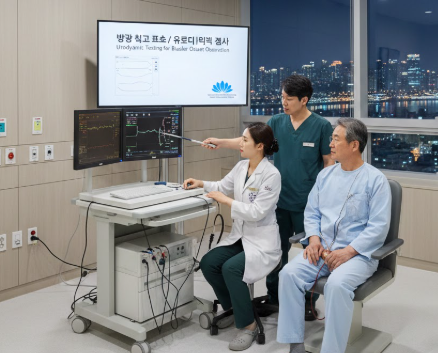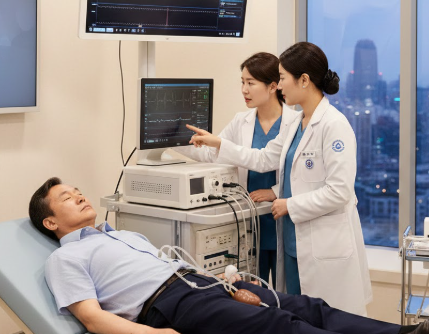Treatment Overview
Enhanced Recovery Fibroid Surgery in Korea is a progressive surgical approach designed to improve outcomes, reduce recovery time, and enhance overall patient experience during fibroid removal procedures. Korea has become a global leader in this field by integrating advanced surgical techniques with structured enhanced recovery after surgery (ERAS) protocols. These protocols focus on minimizing surgical trauma, reducing postoperative pain, and accelerating healing — offering patients a faster and smoother return to daily life.
Uterine fibroids — benign growths in the uterine muscle — are a common gynecological condition affecting women worldwide. Symptoms such as heavy menstrual bleeding, pelvic pain, urinary frequency, and fertility issues often require surgical removal. Enhanced recovery fibroid surgery combines precision surgical techniques with optimized perioperative care, ensuring safe, effective, and patient-centered treatment.
Leading hospitals in Korea, including Samsung Medical Center, Asan Medical Center, Severance Hospital, CHA Bundang Women’s Hospital, and Ewha Womans University Mokdong Hospital, employ this approach using minimally invasive laparoscopic surgery, robotic-assisted myomectomy, and ultrasonic-guided techniques, supported by ERAS principles for optimal recovery.
Purpose & Benefits
The main goal of enhanced recovery fibroid surgery is to improve patient outcomes and reduce the overall impact of surgery on the body. By combining minimally invasive surgery with optimized recovery protocols, Korea’s program offers significant advantages for women undergoing fibroid removal.
Key benefits include:
- Accelerated Recovery: Structured perioperative care reduces hospital stays and speeds up return to daily activities.
- Minimized Pain & Discomfort: Advanced surgical methods and targeted pain management strategies.
- Reduced Blood Loss: Precision instruments and techniques limit intraoperative bleeding.
- Lower Complication Rates: ERAS protocols and minimally invasive techniques lower the risk of complications.
- Preserved Fertility: Focused techniques maintain uterine integrity for future pregnancies.
- Short Hospital Stay: Many patients are discharged within 1–2 days.
- Improved Overall Experience: Patient-centered care enhances comfort and satisfaction.
Korean hospitals combine surgical excellence with ERAS principles to make enhanced recovery fibroid surgery a superior treatment option for women seeking both efficiency and safety.
Ideal Candidates
Enhanced recovery fibroid surgery is suitable for women with symptomatic fibroids, particularly those seeking a minimally invasive approach and a faster recovery. Ideal candidates include:
- Women with heavy menstrual bleeding, pelvic pain, or pressure symptoms caused by fibroids.
- Patients with large or multiple fibroids requiring precise surgical removal.
- Women wishing to preserve their uterus and maintain fertility potential.
- Individuals who prefer a faster recovery and shorter hospital stay.
- Women interested in a modern, patient-centered surgical approach.
Comprehensive preoperative evaluation in Korean hospitals — including ultrasound, MRI, and laboratory testing — ensures individualized treatment planning for optimal outcomes.
Possible Risks & Complications
While enhanced recovery fibroid surgery is highly safe, potential risks include:
- Bleeding: Rare but possible, especially in large or vascular fibroids.
- Infection: Minimal risk, reduced by sterile surgical protocols.
- Adhesion Formation: Lower risk with minimally invasive approaches but still possible.
- Injury to Surrounding Organs: Uncommon due to precise surgical planning.
- Fibroid Recurrence: Possible, though reduced with thorough removal.
Korean hospitals minimize risks by combining advanced surgical technology with careful perioperative planning and enhanced recovery protocols.
Techniques Used
Enhanced recovery fibroid surgery in Korea utilizes a combination of modern surgical methods and ERAS principles to ensure optimal results:
- Laparoscopic Myomectomy: Small incisions with minimal tissue trauma for faster healing.
- Robotic-Assisted Myomectomy: Enhanced precision for complex fibroid removal.
- Ultrasonic-Guided Myomectomy: Real-time imaging to map fibroids accurately during surgery.
- Single-Port Myomectomy: Minimally invasive approach with a single incision for better cosmetic results.
- Energy-Based Devices: Reduce bleeding and protect surrounding tissue.
- Precision Suturing: Ensures uterine integrity and optimal healing.
- Enhanced Recovery After Surgery (ERAS) Protocols: Include preoperative counseling, optimal anesthesia, minimal fasting, early mobilization, and pain control.
This combination ensures a thorough, safe, and efficient fibroid removal procedure with minimized recovery time.
Recovery & Aftercare
Enhanced recovery fibroid surgery in Korea emphasizes reducing the physical and emotional impact of surgery. Recovery is typically quicker compared to traditional open surgery, with many patients resuming daily activities within 1–2 weeks.
Aftercare includes:
- Early mobilization and guided physical activity.
- Personalized pain management.
- Nutritional guidance to support healing.
- Follow-up imaging to monitor uterine health.
- Counseling on fertility and long-term uterine wellness.
Korean hospitals prioritize structured aftercare programs to ensure smooth recovery and long-term satisfaction.
Results & Longevity
Enhanced recovery fibroid surgery offers effective relief from fibroid-related symptoms with faster recovery and reduced complications. Korea’s ERAS-based approach ensures higher patient satisfaction and improved quality of life.
Long-term results show that thorough fibroid removal combined with enhanced recovery protocols significantly reduces recurrence and improves reproductive outcomes.
Treatment Process in Korea
- Initial Consultation: Detailed evaluation of symptoms, imaging results, and fertility goals.
- Preoperative Planning: Custom surgical strategy using advanced diagnostics.
- Surgical Procedure: Fibroid removal with minimally invasive, precision-guided techniques.
- Enhanced Recovery Protocol: Structured perioperative care to speed healing.
- Follow-Up: Imaging and consultations to confirm recovery and monitor uterine health.
Korean hospitals ensure this process is efficient, patient-focused, and designed for optimal results.
Cost Range
Costs for enhanced recovery fibroid surgery in Korea vary by procedure type and hospital:
- Laparoscopic Myomectomy with ERAS: ₩4,500,000 – ₩7,500,000 KRW ($3,400 – $5,600 USD)
- Robotic-Assisted Myomectomy with ERAS: ₩9,500,000 – ₩14,500,000 KRW ($7,200 – $11,000 USD)
- Comprehensive ERAS Fibroid Removal Packages: ₩10,000,000 – ₩15,000,000 KRW ($7,500 – $11,300 USD)
These costs reflect Korea’s advanced surgical expertise, state-of-the-art technology, and patient-focused recovery programs.
Popular Clinics for Enhanced Recovery Fibroid Surgery in Korea
- Samsung Medical Center – Leaders in ERAS-based minimally invasive gynecologic surgery.
- Asan Medical Center – Specialists in robotic-assisted myomectomy and rapid recovery techniques.
- Severance Hospital – Known for fertility-preserving fibroid removal with enhanced recovery protocols.
- CHA Bundang Women’s Hospital – Experts in personalized fibroid surgery with fast recovery.
- Ewha Womans University Mokdong Hospital – Integrates ERAS protocols with advanced fibroid removal techniques.




